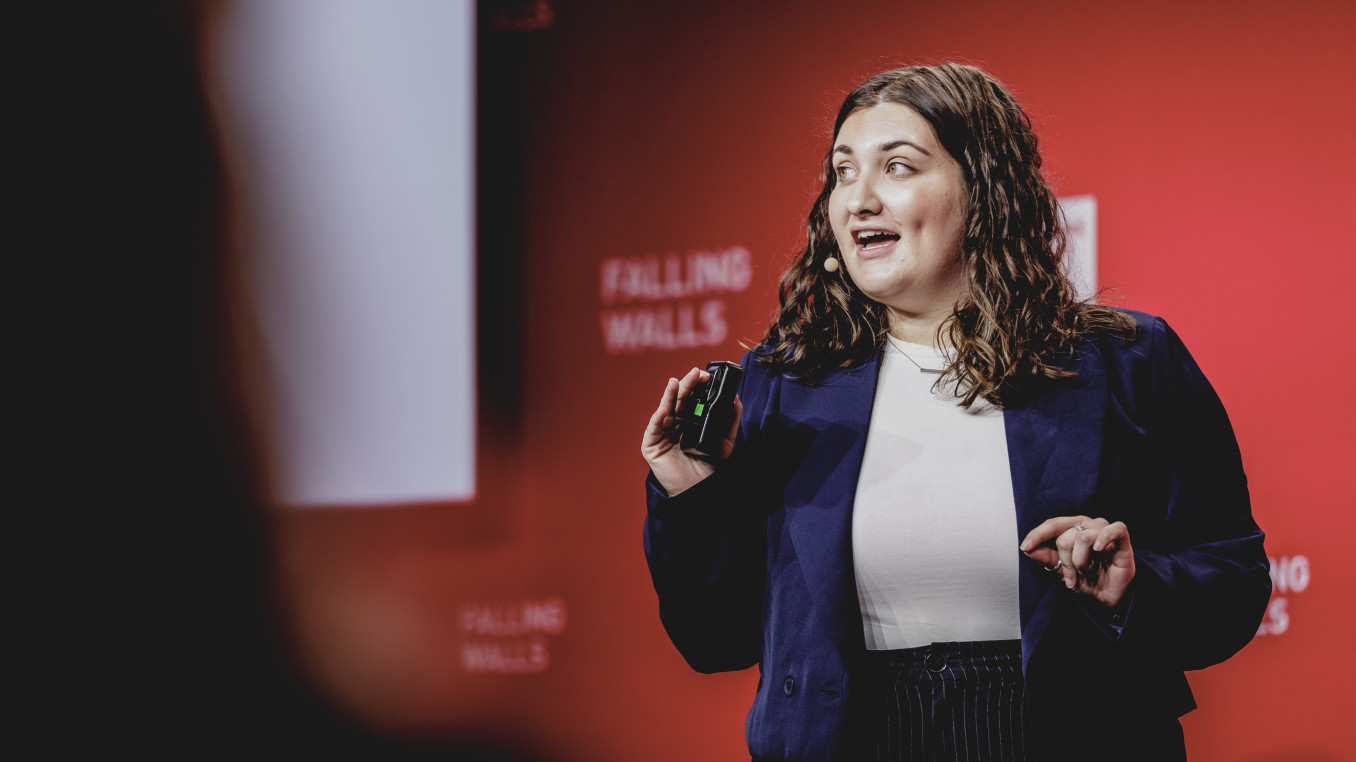Breaking the Wall of Invisible Ovulation
Breaking the Wall of Invisible Ovulation
Global Call 2025 Finalist Interview: Life Sciences
Melina Schuh is Director at the Max Planck Institute for Multidisciplinary Sciences in Göttingen and leads the Department of Meiosis. Her research uncovers causes of age-related fertility decline and meiotic errors in mammalian eggs, developing techniques like Trim-Away protein degradation. She visualised ovulation and revealed spindle formation mechanisms. Schuh is a Leopoldina and EMBO member, Leibniz Prize winner and co-founder of Ovo Labs, aiming to improve fertility treatments.
Which wall does your research or project break?
My research breaks the long-standing wall of invisible ovulation. For decades, ovulation—the central process of fertility—has eluded direct study because it unfolds deep within the body, over hours and at scales too small for conventional imaging. Scientists were forced to rely on static snapshots and indirect inference, which masked the sequence, dynamics and cellular orchestration of egg release.
This lack of live, real-time access created formidable barriers: we could not probe the intricate machinery driving ovulation, nor could we systematically study what goes wrong in disorders like polycystic ovary syndrome (PCOS) and unexplained infertility. As a result, fertility treatments and contraceptive strategies have progressed only incrementally, with significant gaps in knowledge that limit both women’s health and reproductive autonomy worldwide.
My project dismantles these obstacles by pioneering the first live imaging platform to visualise the entire ovulation process at cellular resolution in intact mouse follicles. Using a combination of advanced ex vivo imaging and single-cell RNA sequencing, we reveal how follicles themselves—rather than the entire ovary—autonomously orchestrate egg release. This innovative system replaces rare, static glimpses with dynamic, mechanistic clarity, mapping for the first time the three synchronised phases that drive rupture and propelling the identification of new molecular targets. In doing so, we overcome the historical invisibility, technical inaccessibility and analytical limitations that have long concealed ovulation, opening up previously unreachable terrain for both basic and translational research.
What is the main goal of your research or project?
The main goal of my research is to render ovulation observable, manipulable and mechanistically understood at a resolution previously unattainable, thereby transforming both the study and management of reproductive health. By creating a reproducible platform for live, high-resolution imaging and molecular profiling of follicle dynamics, we seek to answer fundamental questions about how eggs are prepared, released and, critically, how this process can fail. The ability to monitor all stages of ovulation in real time enables us to:
- Dissect the molecular and mechanical pathways governing natural egg release.
- Identify new, non-hormonal targets for fertility modulation and contraceptive development.
- Model and investigate reproductive disorders such as PCOS or premature ovarian failure in an ethically progressive manner, reducing animal use.
- Accelerate drug and treatment discovery by providing a scalable, direct testing environment.
- Democratise research through open sharing of data, protocols and analytic tools, empowering labs worldwide to address local and global questions in women's health.
Ultimately, our objective is to shift the paradigm of reproductive biology from guesswork to granular, actionable insight—enabling better fertility treatments, more effective non-hormonal contraceptives and a deeper understanding of ovarian function and dysfunction for generations to come.
What advice would you give to young scientists or students interested in pursuing a career in research, or to your younger self starting in science?
Starting a career in research is both thrilling and challenging. If I could speak to my younger self or to anyone beginning this journey, I would emphasise a few key principles.
- First, follow your curiosity and passion. Choose research topics that genuinely fascinate you, because true enthusiasm will help you overcome difficulties and keep you motivated. Always ask questions and remain open to wonder, as curiosity often sparks the most meaningful discoveries.
- Second, accept that failure is part of the process. Mistakes and setbacks are inevitable, but they are valuable learning experiences that build resilience. Persistence is more important than perfection; many breakthroughs come from pushing through obstacles.
- Third, seek guidance and collaboration. Find mentors who can offer advice and broaden your perspective, and do not hesitate to work with others. Science thrives on teamwork, and diverse viewpoints often lead to the most creative solutions.
- Fourth, develop essential skills beyond benchwork. Practice clear communication so you can explain your ideas to experts and non-experts alike. Cultivate critical thinking to challenge assumptions and explore novel approaches. Manage your time wisely to balance focused work with rest and reflection.
- Fifth, stay flexible and ethical. The scientific landscape changes fast, so keep learning and be open to new directions–even those you had not anticipated. At all times, maintain integrity and respect for the work of others.
- Finally, remember that success is not just about publications or awards. Your contributions– whether through mentoring, persistence or small advances–matter deeply. Enjoy the journey itself; research is a lifelong adventure in learning and growth.
What inspired you to be in the profession you are today?
My fascination with the hidden cellular mechanisms of egg cell development and fertility, combined with the potential to transform reproductive health, inspired me to pursue research that reveals life’s most fundamental yet elusive processes.
What impact does your research or project have on society?
My work uncovers the root causes of age-related fertility decline and pregnancy loss, enabling new fertility treatments and contraceptives that improve reproductive health and family outcomes worldwide.
What is one surprising fact about your research or project that people might not know?
One surprising fact is that I once doubted whether I would be a good experimentalist—while theoretical work always came naturally to me, I initially found experiments daunting. Over time, however, I gained confidence and discovered that I am actually much better at experimental work than I ever expected, which has become a defining and rewarding part of my research career.
What’s the most exciting moment you've experienced over the course of your research or project?
The first time we captured live imaging of ovulation unfolding at cellular resolution was breathtaking–a moment of breakthrough that transformed years of theory into vivid, observable reality.

